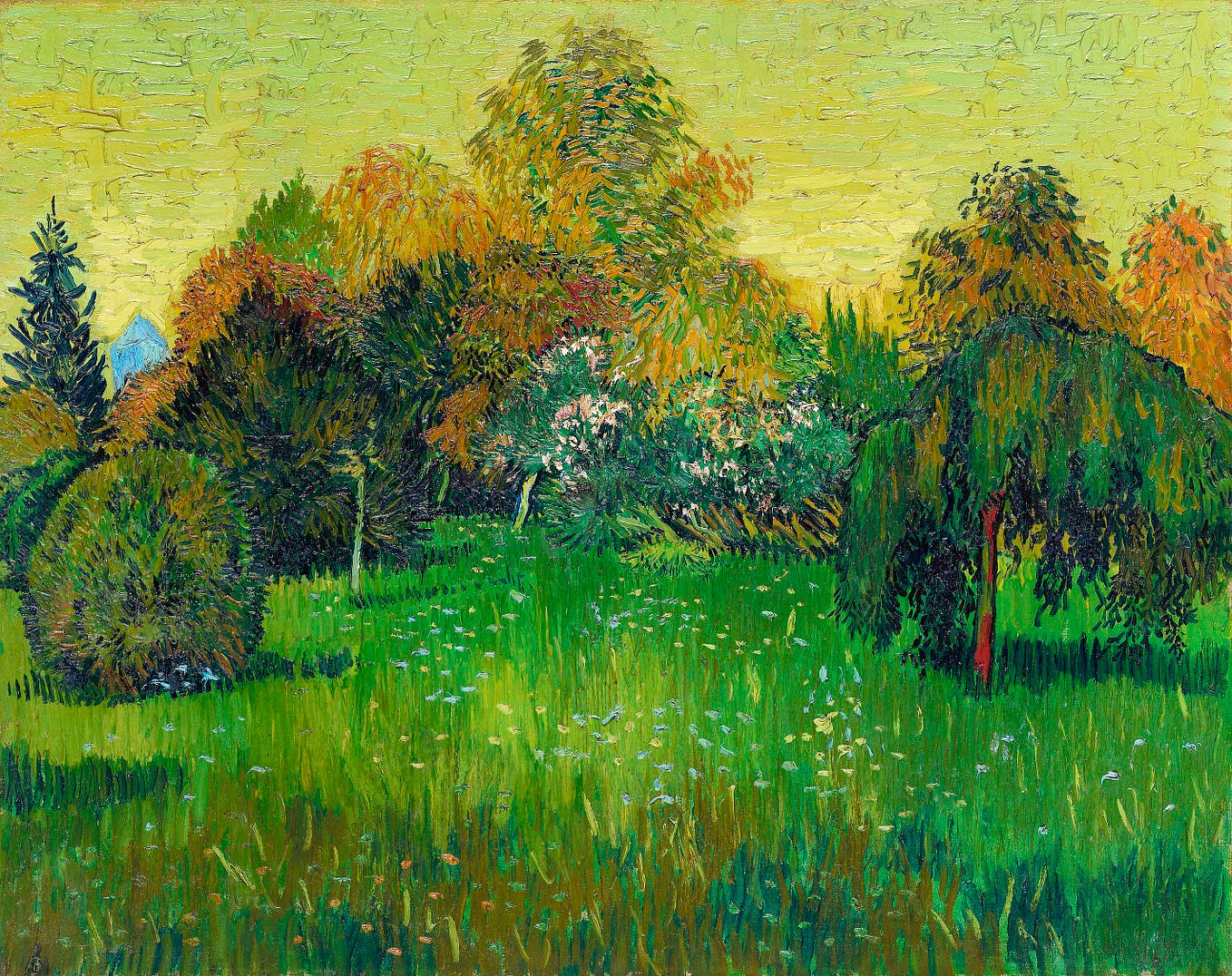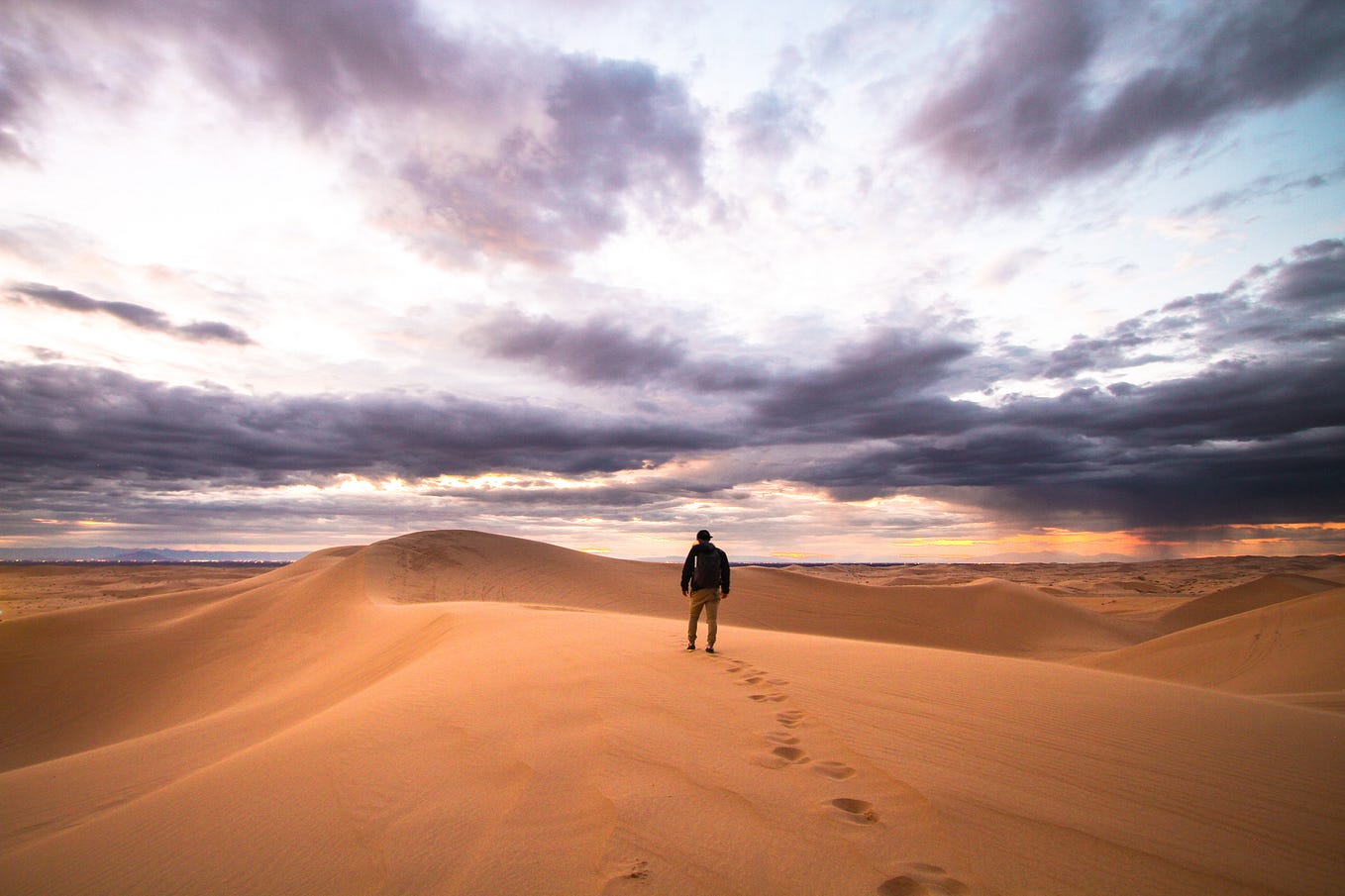4 Nature Writing Techniques For Telling More-Than-Human Stories
#1 Individualizing: Tell stories about individuals, not animals or people in general
There’s a quote from the nature writer Barry Lopez that I keep thinking about: “One of the things you have to do when you edit your work is make sure that when you use the first person, it’s about more than you. We need the story of us.”
This quote is from a rather obscure interview with Lopez that digs surprisingly deep into his approach to nature writing. In the interview, Lopez talks about his classic book Arctic Dreams, which writer Margaret Atwood called “a book full of resonance.” In recalling his writing process, Lopez writes,
“when I wrote Arctic Dreams, the image I had always of the reader was of somebody standing right next to me. I was pointing something out, talking about it. But what I wanted to happen was for the reader to forget about me, to step in front of me, and say, oh my God, I’m sitting here watching this polar bear . . .”
How do we get readers to ‘step in front of us’ and say “Oh my god, there’s a polar bear!”?
The point I gather from Lopez here is that nature writing should do more than just describe what I did somewhere you didn’t go. The point is not to avoid writing about your personal experience in nature and travel writing. It’s just that for Lopez, it’s important to convey to the reader what your experience means not just for you, but ‘for us’ as beings struggling to live well with one another — human and nonhuman — in these uncertain times.
Over the past few years, I’ve started to reverse-engineer passages I find compelling to figure what makes them sing, and to tell environmental stories that are not just about me, but connect my personal experiences to the collective eco-social challenges we face today.
Below, I unpack 4 short paragraphs from nature writers I admire. And underlying each of these paragraphs are 4 useful nature writing techniques.
#1 ‘Individualizing’
Consider this opening paragraph by science writer Ed Yong in his article: “North Atlantic Right Whales Are Dying in Horrific Ways.” Yong begins the piece like this:
“She was called Punctuation, after the small scars on her head that looked like commas and dashes. She was a North Atlantic right whale, one of an estimated 411 left in the world. She was one of just 100 reproductively active females left. She was mother to at least eight calves, and a grandmother to at least two grand-calves. She was about 40 years old when her body was found floating in the Gulf of St. Lawrence on June 20, 2019. Preliminary results from a necropsy suggest that she likely died after being hit by a ship.”
There is a lot going on here but here is one takeaway: Yong writes often about wildlife conservation, and a constant concern has is this: how do you keep readers engaged in stories that are often about ecological doom and gloom? Or, “How do you get a reader to give a shit?” as Yong succinctly puts it.
The function of this opening paragraph aims to get readers to care about the plight of the North Atlantic right whale, and a good strategy to accomplish this, Yong has said, is to individualize the animal. In other words, we know this isn’t simply a story about 400 or so whales threatened by ships: it’s the story of Punctuation, a whale with a name, a family, and a known life story that ended with her death.
#2 ‘Emplacing’
In 2013, the environmental journalist Cally Carswell published an award-winning essay on scientists racing to understand how trees die in the American West, in order to save them. In ‘The Tree Coroners,” a bigger question Carswell sought to unpack is how well trees will survive in a warming world. But to do this, she first needed to do some fundamental scene-setting. Here is the opening paragraph:
“There are few better places than Frijoles Mesa to study the mortality of trees. This tongue of land lies partly within the grounds of Los Alamos National Laboratory in northern New Mexico’s Jemez Mountains. To the west rises Cerro Grande, a mountain riddled with the charred skeletons of fir and pine trees. To the southwest are the lingering scars of another fire, one so intense that its heat alone killed trees that weren’t consumed by the flames themselves.”
Readers gain an immediate sense of the heat of the place we’re being asked to visit: Frijoles Mesa. In this brief opening, we not only get information about why this place is significant (to study the mortality of trees) but what this mortality looks like: “a mountain riddled with the charred skeletons of fir and pine trees.” The heat is so intense here that even trees that didn’t burn up in flames still died from the feverish landscape.
Carswell is a compelling environmental writer for many reasons, but here she is especially effective at emplacing the reader in a lively landscape, using metaphors to filter and sharpen the burning world beyond her words.
#3 ‘Stepping stones’
One of my favorite books of 2020 was mycologist Merlin Sheldrake’s ‘Entangled Life.’ The book weaves nature writing, travel, memoir, and science into a compelling story about our emerging understandings of the strange fungal world beneath our feet.
But in his opening paragraph, consider the technique Sheldrake uses here: ‘stepping stones’. By stepping stones, what I mean is that to get from here (fungi are everywhere) to there (yet they’re still a mystery), Sheldrake takes the reader across many stepping stones (topics) in a short distance.
“Fungi are everywhere but they are easy to miss. They are inside you and around you. They sustain you and all that you depend on. As you read these words, fungi are changing the way that life happens, as they have done for more than a billion years. They are eating rock, making soil, digesting pollutants, nourishing and killing plants, surviving in space, inducing visions, producing food, making medicines, manipulating animal behavior, and influencing the composition of the Earth’s atmosphere. Fungi provide a key to understanding the planet on which we live, and the ways that we think, feel, and behave. Yet they live their lives largely hidden from view, and over ninety percent of their species remain undocumented. The more we learn about fungi, the less makes sense without them.”
Reading this paragraph is dizzying but that’s the point: its function is to create a sense of wonder about fungi by having us hop across many different topics in a short time. At the end of the paragraph, the reader is left dizzy but curious, wondering where will we hop to next?
#4 Scaling-up/down
Finally, this paragraph comes from the opening of Stephen Johnson’s incredible book ‘The Ghost Map: The Story of London’s Most Terrifying Epidemic — and How it Changed Science, Cities and the Modern World.’ I call the technique he uses here ‘scaling’ because it propels the reader across multiple scales or levels of human and nonhuman activity in a very short space:
“This is a story with four protagonists: a deadly bacterium, a vast city, and two
gifted but very different men. One dark week a hundred fifty years ago, in the
midst of great terror and human suffering, their lives collided on London’s
Broad Street, on the western edge of Soho. This book is an attempt to tell the story of that collision in a way that does justice to the multiple scales of existence that helped bring it about: from the invisible kingdom of microscopic bacteria, to the tragedy and courage and camaraderie of individual lives, to the cultural realm of ideas and ideologies, all the way up to the sprawling metropolis of London itself.”
This is a compelling strategy to give readers some perspective on the story you're about to tell. But it also seems to be an important technique for telling stories that involve not just human beings, but ‘more-than-human’ actors both tiny and immense, from bacteria on up to entire cities.
Takeaway
Use these four nature writing techniques to tell compelling environmental stories about animals, people, places, and our relationship to the wider natural world.
- Individualizing: Tell stories about individuals, not animals or people in general.
- Emplacing: use thematic metaphors (e.g. about heat) to enliven the place where your story happens.
- Stepping-stones: Introduce readers to many questions and topics related to your story to help them quickly traverse a large territory you want to cover, while simultaneously and triggering a sense of wonder too.
- Scaling up/down: In a short span, propel readers across many scales of action and scenery, from the microscopic to the planetary.
To conclude, here’s another memorable quote from Barry Lopez that I think captures an important principle that should guide our efforts to tell better environmental stories:
“The listener or the reader does not want to be in the position of being lectured to or being treated as somebody who’s not capable of knowing, or treated like an outsider, and that’s a very valuable lesson for me as a writer…I want everything that I write to end with this note: Here’s what I saw, what do you think? Instead of saying “here’s what I saw, and here’s what you should believe.”
Despite my own failings, as a writer and as a human being, the driving thing behind is if you’re going to tell a story, tell a story that helps…and to find common cause with people whose desire is to help — not to direct the show, or tell people what to think — but to help.”








